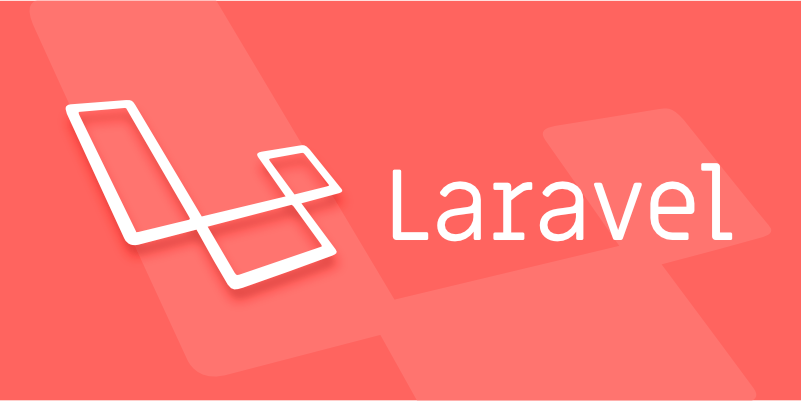Cron Job is an operating system-level timing task mechanism that Laravel Scheduler relies on triggering execution. To set up Cron Job, you need to edit the crontab file and add a command like * php /path/to/artisan schedule:run >> /dev/null 2>&1. Defining tasks in Laravel requires setting the frequency using command()->daily() and other methods in the schedule method of app/Console/Kernel.php, and you can prevent conflicts by -> without Overlapping(). Common problems include permissions, time zone configuration and path errors. It is recommended to troubleshoot problems through logs and test whether Cron is running normally.

Cron Jobs is the underlying execution mechanism of Laravel Scheduler, which enables automatic operation of timed tasks. To truly make good use of Laravel's scheduling capabilities, understanding how to set up and use Cron Jobs is the key.

What is a Cron Job?
Simply put, Cron Job is an operating system-level timing task that defines execution time and commands by editing crontab files. Laravel's scheduler is essentially just a PHP command encapsulation, and ultimately depends on the system Cron to trigger schedule:run command.
For example, if you want to run a task at 1 a.m. every day, you need to add a Cron expression like this to the server:

0 1 * * * php /path-to-your-laravel-project/artisan schedule:run >> /dev/null 2>&1
The meaning of this command is: execute Laravel's scheduler at 1:00 AM every day to check whether there are tasks that need to be run.
How to set up a Cron Job?
There are two main steps to set up a Cron Job:

Enter the crontab editing interface of the current user
Use the commandcrontab -eto enter editing mode (if you are using it for the first time, it may allow you to select an editor).Add Laravel Scheduling Command
Add a line of commands similar:
* * * * * php /path/to/artisan schedule:run >> /dev/null 2>&1
Notice:
- Replace
/path/to/artisanwith your actual path. -
>> /dev/null 2>&1is to discard the output to prevent email notifications. If you want to debug whether Cron is running normally, you can remove this part first and view the log output.
Some server environments (such as some shared hosting) do not support direct editing of crontab, you can add timed tasks through the control panel or contact customer service.
How to define tasks in Laravel?
In Laravel, all timing tasks are defined in the schedule method of app/Console/Kernel.php . For example:
protected function schedule(Schedule $schedule)
{
$schedule->command('emails:send')->daily();
} This code means that emails:send command is executed once a day.
You can also set more complex time rules, such as:
- Execute once an hour:
hourly() - Execute once a week:
weekly() - Custom time:
cron('0 9 * * 5')(9 am every Friday)
If you have multiple tasks, it is recommended to use
->withoutOverlapping()to prevent repeated execution of tasks.
FAQs and Suggestions
Permissions issue
Ensure that users running Cron have execution permissions to the Laravel project directory, especiallyartisanand cache folders.Time zone problem
By default, Cron uses server local time. If your application has other time zones (such as Asia/Shanghai), it is recommended to configure them uniformly:
protected function scheduleTimezone()
{
return 'Asia/Shanghai';
}Test whether Cron takes effect
You can temporarily set Cron to be executed once a minute, and then observe whether the log records the task execution as expected.-
Task not executed?
Check the following points:- Is the Cron expression correct?
- Is the Artisan path correct?
- Is the server Cron started?
- Is there any error message in the log output?
Basically that's it. It is not complicated to set up, but it is easy to ignore details, especially the issues of paths and time zones. As long as you ensure that Cron correctly triggers Laravel's scheduler, the remaining logic can be handled clearly within Laravel.
The above is the detailed content of Setting up and using Cron Jobs for Laravel Scheduler.. For more information, please follow other related articles on the PHP Chinese website!

Hot AI Tools

Undress AI Tool
Undress images for free

Undresser.AI Undress
AI-powered app for creating realistic nude photos

AI Clothes Remover
Online AI tool for removing clothes from photos.

Clothoff.io
AI clothes remover

Video Face Swap
Swap faces in any video effortlessly with our completely free AI face swap tool!

Hot Article

Hot Tools

Notepad++7.3.1
Easy-to-use and free code editor

SublimeText3 Chinese version
Chinese version, very easy to use

Zend Studio 13.0.1
Powerful PHP integrated development environment

Dreamweaver CS6
Visual web development tools

SublimeText3 Mac version
God-level code editing software (SublimeText3)

Hot Topics
 What are policies in Laravel, and how are they used?
Jun 21, 2025 am 12:21 AM
What are policies in Laravel, and how are they used?
Jun 21, 2025 am 12:21 AM
InLaravel,policiesorganizeauthorizationlogicformodelactions.1.Policiesareclasseswithmethodslikeview,create,update,anddeletethatreturntrueorfalsebasedonuserpermissions.2.Toregisterapolicy,mapthemodeltoitspolicyinthe$policiesarrayofAuthServiceProvider.
 How do I install Laravel on my operating system (Windows, macOS, Linux)?
Jun 19, 2025 am 12:31 AM
How do I install Laravel on my operating system (Windows, macOS, Linux)?
Jun 19, 2025 am 12:31 AM
Yes,youcaninstallLaravelonanyoperatingsystembyfollowingthesesteps:1.InstallPHPandrequiredextensionslikembstring,openssl,andxmlusingtoolslikeXAMPPonWindows,HomebrewonmacOS,oraptonLinux;2.InstallComposer,usinganinstalleronWindowsorterminalcommandsonmac
 What are controllers in Laravel, and what is their purpose?
Jun 20, 2025 am 12:31 AM
What are controllers in Laravel, and what is their purpose?
Jun 20, 2025 am 12:31 AM
The main role of the controller in Laravel is to process HTTP requests and return responses to keep the code neat and maintainable. By concentrating the relevant request logic into a class, the controller makes the routing file simpler, such as putting user profile display, editing and deletion operations in different methods of UserController. The creation of a controller can be implemented through the Artisan command phpartisanmake:controllerUserController, while the resource controller is generated using the --resource option, covering methods for standard CRUD operations. Then you need to bind the controller in the route, such as Route::get('/user/{id
 How do I customize the authentication views and logic in Laravel?
Jun 22, 2025 am 01:01 AM
How do I customize the authentication views and logic in Laravel?
Jun 22, 2025 am 01:01 AM
Laravel allows custom authentication views and logic by overriding the default stub and controller. 1. To customize the authentication view, use the command phpartisanvendor:publish-tag=laravel-auth to copy the default Blade template to the resources/views/auth directory and modify it, such as adding the "Terms of Service" check box. 2. To modify the authentication logic, you need to adjust the methods in RegisterController, LoginController and ResetPasswordController, such as updating the validator() method to verify the added field, or rewriting r
 How do I use Laravel's validation system to validate form data?
Jun 22, 2025 pm 04:09 PM
How do I use Laravel's validation system to validate form data?
Jun 22, 2025 pm 04:09 PM
Laravelprovidesrobusttoolsforvalidatingformdata.1.Basicvalidationcanbedoneusingthevalidate()methodincontrollers,ensuringfieldsmeetcriterialikerequired,maxlength,oruniquevalues.2.Forcomplexscenarios,formrequestsencapsulatevalidationlogicintodedicatedc
 Selecting Specific Columns | Performance Optimization
Jun 27, 2025 pm 05:46 PM
Selecting Specific Columns | Performance Optimization
Jun 27, 2025 pm 05:46 PM
Selectingonlyneededcolumnsimprovesperformancebyreducingresourceusage.1.Fetchingallcolumnsincreasesmemory,network,andprocessingoverhead.2.Unnecessarydataretrievalpreventseffectiveindexuse,raisesdiskI/O,andslowsqueryexecution.3.Tooptimize,identifyrequi
 How do I escape HTML output in a Blade template using {{{ ... }}}? (Note: rarely used, prefer {{ ... }})
Jun 23, 2025 pm 07:29 PM
How do I escape HTML output in a Blade template using {{{ ... }}}? (Note: rarely used, prefer {{ ... }})
Jun 23, 2025 pm 07:29 PM
InLaravelBladetemplates,use{{{...}}}todisplayrawHTML.Bladeescapescontentwithin{{...}}usinghtmlspecialchars()topreventXSSattacks.However,triplebracesbypassescaping,renderingHTMLas-is.Thisshouldbeusedsparinglyandonlywithfullytrusteddata.Acceptablecases
 How do I mock dependencies in Laravel tests?
Jun 22, 2025 am 12:42 AM
How do I mock dependencies in Laravel tests?
Jun 22, 2025 am 12:42 AM
TomockdependencieseffectivelyinLaravel,usedependencyinjectionforservices,shouldReceive()forfacades,andMockeryforcomplexcases.1.Forinjectedservices,use$this->instance()toreplacetherealclasswithamock.2.ForfacadeslikeMailorCache,useshouldReceive()tod






